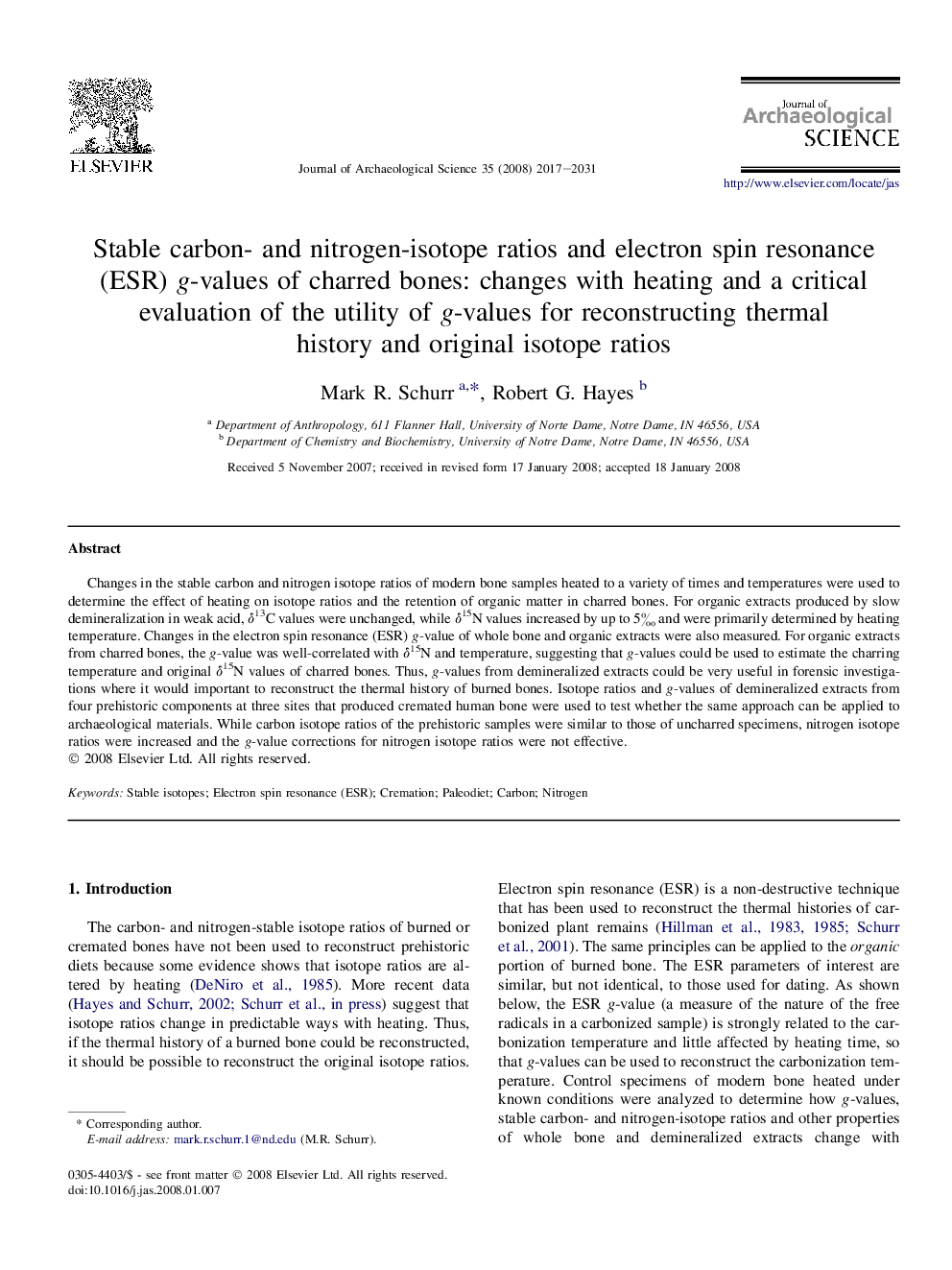| Article ID | Journal | Published Year | Pages | File Type |
|---|---|---|---|---|
| 1037267 | Journal of Archaeological Science | 2017 | 15 Pages |
Abstract
Changes in the stable carbon and nitrogen isotope ratios of modern bone samples heated to a variety of times and temperatures were used to determine the effect of heating on isotope ratios and the retention of organic matter in charred bones. For organic extracts produced by slow demineralization in weak acid, δ13C values were unchanged, while δ15N values increased by up to 5Ⱐand were primarily determined by heating temperature. Changes in the electron spin resonance (ESR) g-value of whole bone and organic extracts were also measured. For organic extracts from charred bones, the g-value was well-correlated with δ15N and temperature, suggesting that g-values could be used to estimate the charring temperature and original δ15N values of charred bones. Thus, g-values from demineralized extracts could be very useful in forensic investigations where it would important to reconstruct the thermal history of burned bones. Isotope ratios and g-values of demineralized extracts from four prehistoric components at three sites that produced cremated human bone were used to test whether the same approach can be applied to archaeological materials. While carbon isotope ratios of the prehistoric samples were similar to those of uncharred specimens, nitrogen isotope ratios were increased and the g-value corrections for nitrogen isotope ratios were not effective.
Related Topics
Physical Sciences and Engineering
Materials Science
Materials Science (General)
Authors
Mark R. Schurr, Robert G. Hayes,
